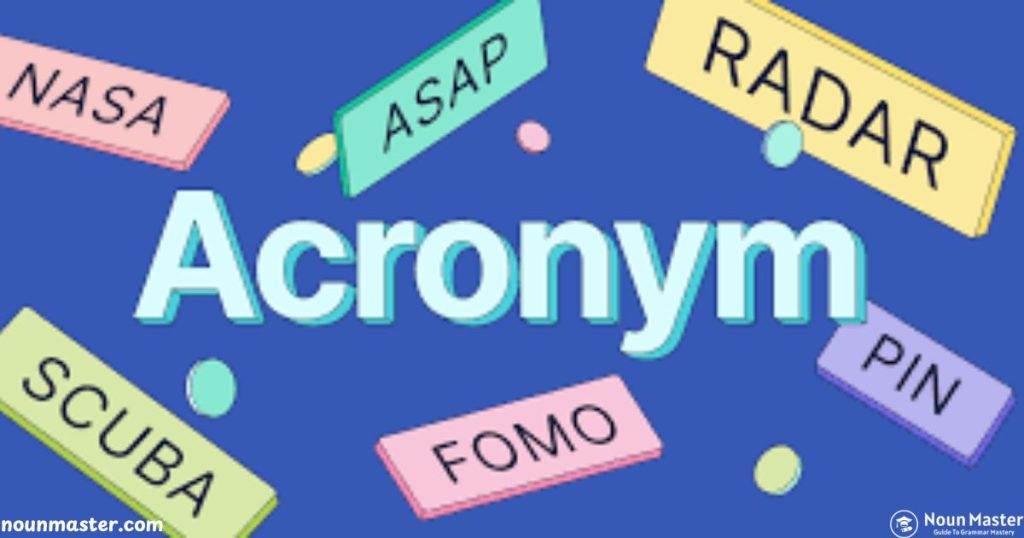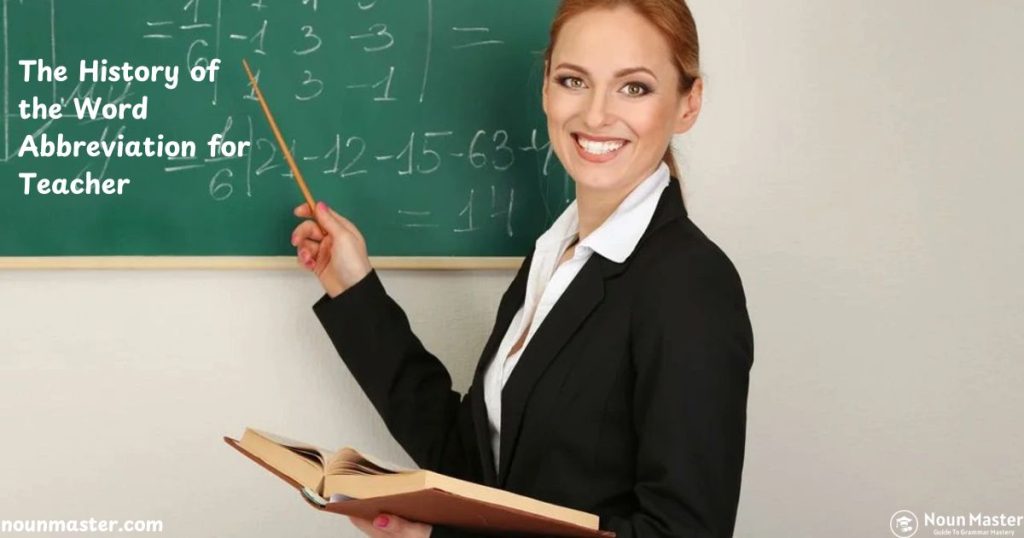The Abbreviation for Teacher is commonly used to make communication quicker and more efficient. The most popular teacher abbreviation is Tchr., which is often seen in school schedules and lesson plans. This short form of teacher helps save time, especially in informal settings.
When using the Abbreviation for Teacher, it’s important to know when and where to use it. In formal documents, it’s better to write the word “teacher” fully. The teacher short form works well in casual communication, such as notes or internal documents. However, for official reports or meetings, clarity matters, and the full term is more appropriate. Understanding when to use the abbreviation for teacher helps ensure effective communication.
What is the Abbreviation for Teacher?
When it comes to the term “teacher,” many people wonder if there’s a common abbreviation for it. While there isn’t a widely accepted abbreviation for “teacher” in formal writing, some people use “Tchr” or “Tch.” These shortened forms are more often seen in casual or space-limited contexts. Though not universal, these abbreviations can occasionally appear in notes or quick references.
The teacher short form you’ll most commonly encounter is “Tchr.” It’s a convenient way to save space, especially in educational settings like worksheets or lesson plans. However, it’s essential to recognize that this abbreviation isn’t standard, and people may interpret it differently. If you’re unsure, it’s always safest to use the full term, “teacher.”
Students may use abbreviations like “Tchr” when writing notes or assignments. These abbreviations help make their writing more concise without losing the meaning. However, it’s important to note that while abbreviations can save time, they aren’t always appropriate for formal communication. Using the full word “teacher” is often preferred in more professional or official contexts.
What Does Abbreviation for Teacher Mean?
The abbreviation for teacher, often written as “Tchr,” serves as a shorthand used in informal or space-limited settings. It helps streamline communication in places like lesson plans or classroom materials where brevity is essential. However, it’s not a standardized abbreviation and can vary depending on context.
The teacher short form “Tchr” is generally used for convenience rather than formal writing. While it’s helpful in informal notes, it’s important to use the full term “teacher” when addressing official documents, presentations, or professional environments. This ensures clarity and maintains the respect the role deserves.
- “The Teacher explained the lesson clearly, making it easy to understand.”
- “Our Teacher asked us to submit the assignment by Friday.”
- “The Teacher in charge of the event gave a wonderful speech.”
Definition, Pronunciation, and Meaning
The term “definition” refers to the clear explanation or meaning of a word or concept. It helps provide understanding by breaking down complex ideas into simpler, more accessible terms. Definitions are essential for communication, as they ensure both parties have a mutual understanding of the subject being discussed.
Pronunciation refers to how a word is spoken or articulated. It involves the correct sounds, stresses, and intonations used when saying a word. Proper pronunciation ensures clarity and prevents misunderstandings in conversation. The pronunciation of words can vary depending on regional accents or language differences.
Meaning refers to the significance or interpretation of something, like a word, symbol, or gesture. It’s the underlying concept or idea that the word conveys in context. Understanding the meaning is crucial for effective communication, as it determines how a message is received and interpreted by others.
Example, “The teacher guided her students through challenging algebra concepts,” or even, “She wasn’t merely a teacher; she was a mentor who encouraged me to pursue my passion for science.”
The essence of the word remains consistent, whether you’re talking about a formal educator or someone who imparts valuable life lessons.
What’s intriguing is how the term has evolved, now representing such a wide array of roles and responsibilities.
Short Abbreviation for Teacher
The short abbreviation for teacher is commonly written as “Tchr.” This form is typically used in informal settings, such as lesson plans, notes, or classroom materials, where space is limited. It’s a quick way to refer to educators without writing out the full word.
While the abbreviation “Tchr” is useful in certain contexts, it’s not universally accepted. In formal writing or professional documents, it’s best to use the full term “teacher” to avoid confusion and maintain clarity. Using abbreviations can sometimes risk losing the respect and importance associated with the role of a teacher.
Examples: You might come across “Tchr. Adams” on a printed schedule for parent-teacher conferences.
When using this abbreviation, make sure it’s clear to your audience. For formal documents, it’s often better to write “teacher” in full to prevent any confusion.
Internal Link: Guide on effective communication in educational settings.
Acronym for Teacher

An acronym for teacher isn’t commonly used in formal writing, but “TCHR” is sometimes seen in shorthand contexts. This abbreviation is helpful when space is tight, such as in notes or schedules. It serves as a quicker reference but isn’t universally recognized.
While abbreviations like “TCHR” can be useful in informal communication, it’s important to be mindful of the audience. In professional or educational settings, spelling out “teacher” is usually preferred for clarity and to maintain respect for the role.
Using acronyms in the wrong context can lead to confusion. Always consider the appropriateness of abbreviating terms before doing so in formal documents.
Synonyms for Teacher
Common synonyms for teacher include “educator,” “instructor,” “mentor,” and “tutor.” Each word carries a slightly different nuance, with “mentor” emphasizing guidance and “tutor” often referring to personalized teaching.
These synonyms highlight different aspects of teaching, allowing for more precise language depending on the context, whether in a classroom or one-on-one setting.
- Educator (a broad term used for anyone involved in teaching or instruction, often in academic settings)
- Instructor (often used in more formal settings, especially for specific subjects or courses)
- Mentor (focuses on providing guidance and personal development, typically in a one-on-one relationship)
- Tutor (generally refers to someone providing individualized instruction, often outside regular school hours)
- Coach (used in sports or to describe someone who teaches or trains a specific skill)
- Facilitator (a person who helps guide a group, often used in workshops or collaborative learning environments)
Example:
“The instructor outlined the theory behind the experiment.”
“She’s more of a mentor than just a teacher; she’s been instrumental in guiding my career decisions.”
Using varied synonyms can enhance your writing and emphasize different facets of a teacher’s role.
Antonym for Teacher
The antonym for teacher is often considered “student.” While a teacher imparts knowledge, a student absorbs it. These two roles are complementary, with the teacher facilitating learning and the student receiving instruction.
Another possible antonym is “learner,” which highlights the passive role compared to the active teaching role.
In some contexts, “ignorant” or “non-educator” might be used to contrast someone without knowledge or teaching responsibilities, though these terms are less commonly used and can be more critical.
The History of the Word Abbreviation for Teacher

The abbreviation for teacher has evolved over time to simplify communication. Originally, the full word “teacher” was used universally, but as language became more efficient, shorthand versions emerged in written documents. Early examples of abbreviations were more formal, reflecting the respect for educators.
By the late 19th and early 20th centuries, the abbreviation “Tchr.” gained popularity. It was commonly used in administrative settings, particularly in schools, to save space in attendance sheets, lesson plans, and other records. This abbreviation helped streamline documentation, especially in environments where space was limited.
As digital communication advanced, shorter forms such as “Tchr.” and “Tch.” became standard in more informal contexts like email and text messages. These abbreviations made it easier to type quickly while still conveying the meaning of the word.
Today, while “teacher” is often abbreviated in informal settings, the full term remains prevalent in formal and professional contexts. The evolution of this abbreviation reflects our society’s growing need for efficiency while still respecting the role of educators.
When to Use the Abbreviation for Teacher
The teacher short form is most useful in informal or space-constrained settings. For example, on schedules, lesson plans, or notes, abbreviating “teacher” to “Tchr.” can help save time and space. It’s especially common in school environments where documents often need to be concise.
However, the teacher abbreviation should be used cautiously. In professional documents or formal communication, it’s best to spell out “teacher” fully to ensure clarity and maintain respect for the role. This is especially true when addressing parents or in official reports.
When writing for students or in casual settings, the teacher short form can be used to simplify text. Yet, always consider your audience when in doubt, avoid abbreviations to ensure your message is clear and respectful.
How to Pronounce Teacher
“Teacher” is pronounced as /ˈtiː.tʃər/. The first syllable sounds like “tee,” and the second syllable sounds like “chur.” The emphasis is placed on the first syllable.
Other Examples of Usage:
- “The teacher patiently answered all our questions during the lecture.”
- “She’s an inspiring teacher, always finding new ways to engage her students.”
- “The teacher assigned a project on environmental conservation.”
- “As a new teacher, he quickly gained the respect of his students.”
- “A great teacher makes learning exciting and enjoyable for everyone.”
Examples of the Word and Abbreviations in Context
- “The schedule lists Tchr. Brown as our homeroom teacher.” Here, “Tchr.” is used as a quick reference.
- “We had Tchr. Harris for math today.” This abbreviation helps save space in informal communication.
- “The teacher explained the new concept thoroughly.” In this case, “teacher” is used in its full form for clarity.
- “Please see Tchr. Williams for more details on the project.” Here, the abbreviation simplifies the message.
- “Our teacher is very supportive and always available for help.” This full version emphasizes the teacher’s role.
- “The Teacher. will be absent tomorrow due to a conference.” The abbreviation helps streamline the announcement.
FAQ’s
What is the Abbreviation for Teacher?
The abbreviation for teacher is Tchr. It’s often used in schedules, lesson plans, or notes to save space and time.
When Should I Use the Abbreviation for Teacher?
Use the Abbreviation for Teacher in informal or space-constrained settings like schedules. Avoid it in formal documents to maintain clarity and professionalism.
Is There Another Common Abbreviation for Teacher?
Some people use Tch. as an alternative Abbreviation for Teacher. However, Tchr. remains the most widely accepted and recognized abbreviation.
Can the Abbreviation for Teacher Be Used in Emails?
Yes, the Abbreviation for Teacher is fine for informal emails. For formal communication, it’s better to use the full word “teacher” to avoid confusion.
Is the Abbreviation for Teacher Standard in Schools?
Yes, the Abbreviation for Teacher is common in school schedules and documents. It helps save space while still clearly identifying educators.
Conclusion
The Abbreviation for Teacher is a convenient way to save space and time in informal settings. The most common teacher abbreviation is Tchr., which is widely used in school schedules, lesson plans, and other documents. While the teacher short form helps streamline communication, it’s important to use it in the right context.
In formal documents, it’s better to write “teacher” fully to avoid confusion. The Abbreviation for Teacher is great for internal communication, but for official reports or parent-teacher meetings, clarity matters. When using the short form of teacher, always consider your audience to ensure effective communication. Whether you’re using the teacher abbreviation for students or other informal purposes, it’s a helpful tool for quick references.







